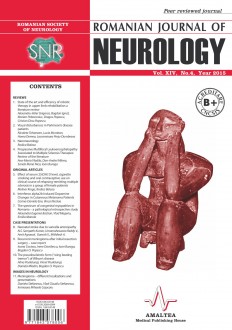SELECT ISSUE

Indexed

| |

|
|
|
| |
|
|
|

|
|
|
|
|
|
| |
|
|
HIGHLIGHTS
National Awards “Science and Research”
NEW! RJN has announced the annually National Award for "Science and Research" for the best scientific articles published throughout the year in the official journal.
Read the Recommendations for the Conduct, Reporting, Editing, and Publication of Scholarly work in Medical Journals.
The published medical research literature is a global public good. Medical journal editors have a social responsibility to promote global health by publishing, whenever possible, research that furthers health worldwide.
NANONEUROLOGY
ABSTRACT
In the last two decades, nanotechnology has acquired a new dimension in medicine and healthcare. Applications of nanotechnology to neurology complement other approaches for the research, diagnosis and treatment of the neurological diseases/disorders (nanoneurology). The clinical challenges imposed by the central nervous system (CNS) and the obstacles faced by anything designed to target and interface with CNS are a result of its unique anatomophysiology. In this context, we can mention the possibilities of nanoparticles (drugs, contrast agents) to cross through blood-brain-barrier. Once entered in CNS, the nanoparticles need to selectively target its intended cells or ligands and only then carry out its primary functions. A promising area that has seen marked progress involves nanoengineered technologies for imaging anatomofunctional structures and for tracking transplanted stem cells and related applications with high effi cacy and at high spatial resolutions. Several “nano” formulations are being investigated as potential carries for drug of various classes to treat the neurological diseases (e.g.: demyelinating, degenerative, stroke, epilepsy). Other potential future applications of nanotechnology include the use of nanoengineered functional scaffold systems for promoting neural regeneration following both acute and chronic neurological injury. Applications of nanotechnology to neurology and to neuroscience more broadly, represent emerging next-generation basic research, diagnostic and therapeutic tools.
Keywords: nanotechnology, neuroimaging, brain drug delivery, blood-brain-barrier, neurological diseases
Full text | PDF
